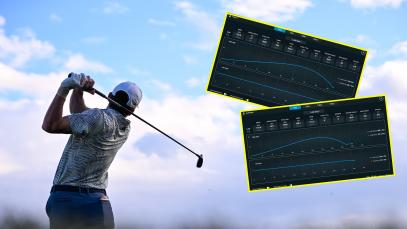My favorite moment during Season 2 of Netflix’s “Full Swing” came when the interviewer asked Justin Thomas how he evaluated his performance last season, shortly after missing the FedEx Cup playoffs. Thomas took a long, deep breath, looked off into the distance and thought. He paused for a moment, then offered his verdict.
“Sh—y,” he said.
He wasn’t wrong. Thomas is a tough, honest, competitive, elite player. It fuels his reputation as perhaps the hardest worker on the PGA Tour and, at times, makes him his own harshest critic.
As underwhelming a season as it was, being sidelined from the FedEx Cup may have been, in the long run, a blessing. It gave Thomas the precious time he needed to get his game back into shape. A solid Ryder Cup performance, followed by four top-15 finishes in five starts so far this season, has put Thomas on the right side of his slump.
Ahead of the 2024 Players Championship, we talked to Thomas to learn a little about what the process looks like—and what the rest of us can learn from it.
More From Golf Digest  Players Championship The 50 greatest players of the last 50 years, ranked by their best season
Players Championship The 50 greatest players of the last 50 years, ranked by their best season  Players Preview The biggest change in pro golf in 50 years might be one you’ve never considered
Players Preview The biggest change in pro golf in 50 years might be one you’ve never considered  Perspective The 18 most underappreciated events in PGA Tour history Embrace trial-and-error off the course
Perspective The 18 most underappreciated events in PGA Tour history Embrace trial-and-error off the course
To practice your best, you need to have the energy levels to do it. That means knowing how to rest and putting your body in a place where it can physically perform.
Last year, Thomas adopted a gluten-free diet. Rory McIlroy, is another notable gluten-free golfer, and JT wanted to try it himself to see if it would raise his energy levels from the course to the range. It was an experiment that ultimately ended in November.

JT came to the conclusion after looking at his recovery data on his Whoop, which he’s been wearing for more than five years, and not seeing the benefits he expected, on or off the course. But while the experiment ultimately didn’t stick, the process of experimental trial-and-error is essential to look for little edges off the course, which will ultimately improve your fate on it.
“We put so much stuff in our food in the U.S. that it’s not necessarily that healthy or good for your body,” Thomas said. “So because of that, there wasn’t as much benefit as there probably should have been. But at the same time, it’s kind of a trial and error. I tried it. I saw the results. I learned a little something, and I move on with more experience.”
Structure and specify your technical practice
JT says part of his struggles last season were technical issues: His swing simply wasn’t hitting the positions he wanted to. But even though there were changes he knew he wanted—and needed—to make, it’s easy to get lost down a rabbit hole of hitting endless range balls.
“Working on my swing is very specific in terms of I guess where I’m at with my game. It may mean that one day I’m checking-in and maintenance a couple times a week. That may only take 10 or 15 minutes one day, or an hour or two…other time I may need to do more mechanical work. That may mean a couple of hours of drills, repetition, and being really focused on what I’m feeling [in the swing]. Either way, I try to be very, very specific in what I’m working on.”
 Use your imagination to up the pressure
Use your imagination to up the pressure
Regardless of what’s going on with his golf swing, Thomas says he reserves at least two to three days a week of heavy performance practice.
As Thomas explained above, whereas swing work requires methodical repetition, performance practice requires trying to hit the same kind of shots and pressure situations you find yourself in on the golf course. That may mean making a certain number of putts in a row, or hitting a shot with some consequences attached if he misses.
The best way to work on your swing, JT explains, is to specify what you’re there to work on, how, and for how long.
Thomas tracks his heart rate via his Whoop during these pressure-packed performance practice sessions, with the goal of making practice feel more difficult than what he’ll encounter on the golf course. Not an easy task, he explains, and one which requires some imagination.
“It’s extremely difficult to emulate. You have to really, really work to try to almost use your imagination and get yourself to a certain place where your heart is racing. It’s almost like a fairytale land type of situation. I try to do it through drills. Anything that might make me very, very uncomfortable or make me look ahead. I may need to make a certain amount of putts in a row, or have to hit a certain number of approach shots within a certain distance or just anything to where there’s almost like a count or a tally. You start thinking ahead, and the next thing you know you miss and you got to start over. It is very difficult to try to recreate those situations, but I feel like the more I’m able to get creative and try to get myself into that place mentally, the more it helps me.”
This article was originally published on golfdigest.com



